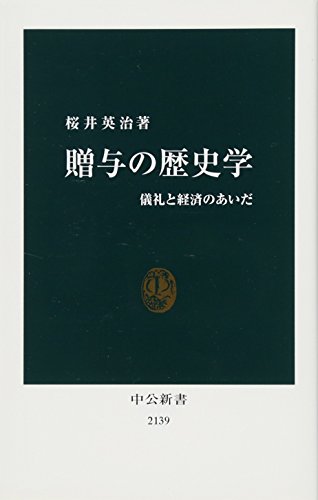- 著者
- 桜井 英治
- 出版者
- 神戸大学経済経営学会
- 雑誌
- 国民経済雑誌 = Journal of economics & business administration (ISSN:03873129)
- 巻号頁・発行日
- vol.220, no.6, pp.97-102, 2019-12
- 著者
- 桜井 英治
- 出版者
- 有斐閣
- 雑誌
- 論究ジュリスト = Quarterly jurist (ISSN:21871302)
- 巻号頁・発行日
- no.32, pp.176-184, 2020
- 著者
- 桜井 英治
- 出版者
- 神戸大学経済経営学会
- 雑誌
- 国民経済雑誌 = Journal of economics & business administration (ISSN:03873129)
- 巻号頁・発行日
- vol.220, no.6, pp.97-102, 2019-12
3 0 0 0 贈与の歴史学 : 儀礼と経済のあいだ
2 0 0 0 OA 割符に関する考察 : 日本中世における為替手形の性格をめぐって
- 著者
- 桜井 英治
- 出版者
- 公益財団法人 史学会
- 雑誌
- 史学雑誌 (ISSN:00182478)
- 巻号頁・発行日
- vol.104, no.7, pp.1211-1246,1360, 1995-07-20 (Released:2017-11-30)
Bills of exchange in medieval Japan, which were called saifu, are understood to have been a means of remittance useable only once. However, in the late medieval age new types appeared which were able to pass from hand to hand as valuable means of exchange. They worked as a means of not only remittance, but also payment and exchange, that is to say, as money. This can be proven by the fact that their face value was fixed at 10 kanmon, that between a drawer and a remitter merchants often stood as intermediaries, and that people in those days did not discriminate between saifu and zeni (coins). According to the extant copies of saifu, all of them bore a fixed face value of 10 kanmon, and were payable to bearers on sight or several days thereafter. Being payable to bearers made them suitable for passing from hand to hand, and being payable on sight or several days thereafter made their long negotiation possible. When their fixed face value is included, all the conditions on which they could be negotiated were satisfied. There were two important premises which allowed negotiable saifu to come into existence. One was that they stood neutral in terms of economic relations: they did not involve interest charges or commissions. The other was that all proper nouns except the name of the drawer (and the payer), were omitted from the face of the bills, which made it as simple as possible. What kind of idea maintained the system of saifu is difficult to attribute to one thing: the strange system by which a piece of paper bearing a large value no less than 10 kanmon could be negotiated without state intervention, but basically it must be, the author believes, the common illusion of a "fetishism for documents" (which also had a large influence on the world of legal thought) that supported the credit of Saifu.
1 0 0 0 OA 「贈与」から歴史を読みなおす
- 著者
- 桜井 英治
- 出版者
- 公益財団法人 日本学術協力財団
- 雑誌
- 学術の動向 (ISSN:13423363)
- 巻号頁・発行日
- vol.10, no.8, pp.78-79, 2005-08-01 (Released:2009-12-21)
- 被引用文献数
- 1

